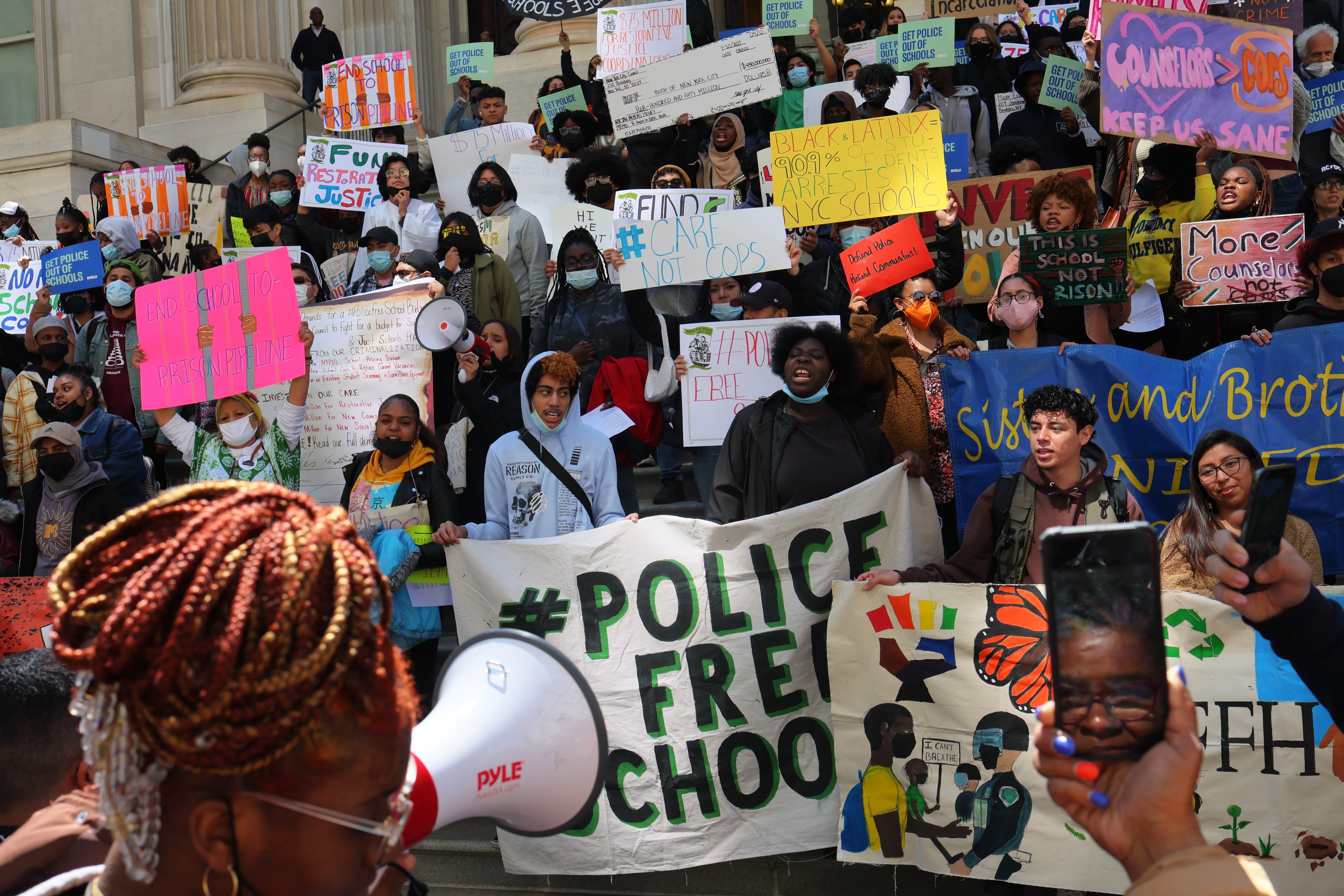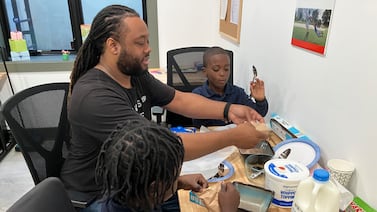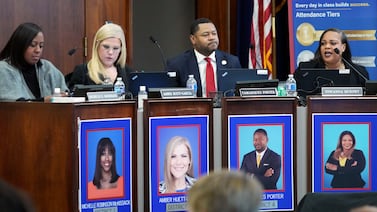As New York City required all students to return to school buildings in September for the first time since the coronavirus pandemic hit, many teachers reported upticks in student behavior and mental health issues.
But so far, that has not led to increased suspensions, according to city data released this week.
From July through December 2021, city schools issued nearly 8,400 suspensions, about 16% fewer than the same period in 2019 before the pandemic hit.
During the first half of this school year, principal suspensions — which last five days or fewer — decreased nearly 16%. Superintendent suspensions, which cover more serious incidents, dropped more than 19%. Those can stretch up to an entire school year, but have been limited to 20 days in most cases since 2019. (Though racial breakdowns are not included in mid-year figures, previous data show Black students and those with disabilities are generally more likely to be suspended.)
Over the past decade, suspensions in city schools have fallen about 55%, and this year’s reduction may reflect the continuation of a long-term trend. (Last school year, most students opted to learn virtually full time, and suspensions plummeted roughly 99%.)
Still, some experts expected this year’s suspension numbers to meet or exceed pre-pandemic levels, as many students are reeling from acute academic and mental health challenges, which may cause them to act out.
There is likely no single explanation for this year’s drop in suspensions, but there are several possibilities. Educators may have been more reluctant to remove students from classrooms after nearly two years of learning disruptions, fearing that removing them from class would set them back even further. Schools may have also relied more on counseling or other support, as district leaders encouraged schools to pay closer attention to student wellbeing, and schools had more resources at their disposal.
Another possibility: Fewer students were in classrooms, limiting opportunities for suspensions. Not only is K-12 enrollment down by roughly 9% since the pandemic hit, but nearly 150,000 students have tested positive for COVID this school year, forcing them to quarantine at home. Chronic absenteeism is also on the rise, with about 37% of students on pace to miss at least 10% of school days this year, city officials said. In recent years, chronic absenteeism rates have been closer to 25%.
Constance Lindsay, a University of North Carolina researcher who has studied school discipline policies, said many of these factors are likely playing a role. She added that the students who were most likely to be infected by COVID or who are chronically absent might also be more likely to be suspended, which would push suspension numbers down. Teacher responses might be different as well, she suggested.
“There has been a lot of attention over the past two years to restorative justice and the school-to-prison pipeline,” she said, in part stoked by racial justice protests in the aftermath of George Floyd’s murder. “I think that had a profound impact on a lot of people.”
Robert Effinger, a teacher at the Bronx High School of Business, said disruptive incidents were more prevalent at his school at the beginning of the year as students reacclimated to the classroom. Many were often frustrated by higher academic standards, including the need to take Regents exams, which are typically required for graduation but were paused during the pandemic.
“I had to reframe things and bring it way down to basics,” he said. That approach has paid off: “It was a complete 180 on all my classroom management issues.”
Suspensions drop while weapon confiscations rise
Still, there is some evidence of changes in student behavior that aren’t reflected in the suspension data. There has been an 80% rise in the number of weapons that schools have confiscated this year through Feb. 20 compared with the same period in 2019, according to police department data.
Fourteen guns have been recovered this school year, up from just one during the same period before the pandemic. There has also been a dramatic increase in students found with tasers or stun guns: 325 this year compared with 47 before the pandemic.
The police statistics come with some caveats. About 36% of the weapons discovered this year were labeled “other,” a substantial increase, and police department officials did not offer details about the most common weapons in that category.
Some students have stressed that statistics like those can be misleading because many might carry items like pepper spray or tasers to protect themselves during their commutes rather than for use inside school buildings. Violence that has occurred outside of school walls this year has affected campuses, including the recent shooting of a Brooklyn 12-year-old, killed while eating in a car. Another student was shot and killed on her walk home from school.
Schools Chancellor David Banks has acknowledged safety concerns in and around school buildings and vowed to replenish the number of safety agents, who are employed by the police department and stationed in schools, as their numbers have slipped due to attrition and hiring challenges.
Mayor Eric Adams has also reversed previous plans to transfer control of school safety agents to the education department, a move that generated criticism from some activists who have argued for significant reforms to the way schools are policed.
Calls continue for more mental health support
Beyond school policing, Banks has not shared a detailed vision for a student discipline policy, though he has offered some clues. At a school safety forum earlier this month, Banks signaled support for efforts to reduce suspensions and said he is not in favor of “zero tolerance” policies.
“Teachers and principals can’t suspend kids for every little thing in ways that they were able to do in the past,” Banks said. “Schools have to be a place where kids learn right from wrong and there will be consequences for bad behavior — but it doesn’t mean being thrown out.”
Under the previous administration, Mayor Bill de Blasio changed the discipline code to limit suspensions for the city’s youngest students, curtail subjective infractions for “insubordination,” and require approval from central office administrators in more situations. De Blasio also promoted “restorative” approaches to student discipline, a constellation of practices that favor peer mediation and conflict resolution over ejecting students from their classes.
Activists have called on the city to invest significantly more funding in restorative justice training and personnel to help schools adopt less punitive practices. At a recent rally, students and elected officials also called for more mental health support, including additional guidance counselors and social workers.
Alex Mojica, a senior at the Bronx Academy for Software Engineering who uses they/them pronouns, says restorative practices have made a big difference in their school experience. In middle school, Mojica was handcuffed after being involved in a fight, but their current school takes a different approach to diffusing conflict.
“Whenever there’s any problems, we have mediations,” they said. “I feel like my school does a really good job at it.”
Still, they are still required to walk through metal detectors on the way into school and said the school safety agents are intimidating.
Jenna Lyle, an education department spokesperson, emphasized investments the city has made in mental health services and said every school should have access to a social worker, counselor, or school-based mental health center.
“Our schools must be welcoming, supportive environments for our young people as they grow academically and socially, and our school staff work hand-in-hand every day with outstanding School Safety Agents to provide safe, supportive environments for every student,” she wrote.
Alex Zimmerman is a reporter for Chalkbeat New York, covering NYC public schools. Contact Alex at azimmerman@chalkbeat.org.







